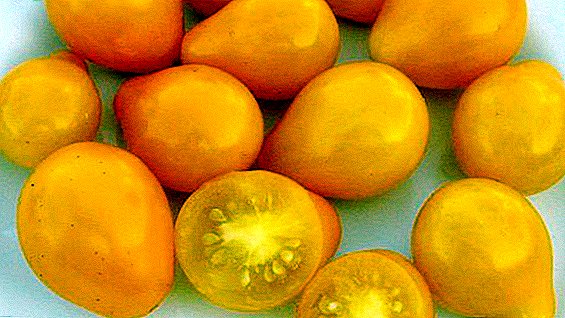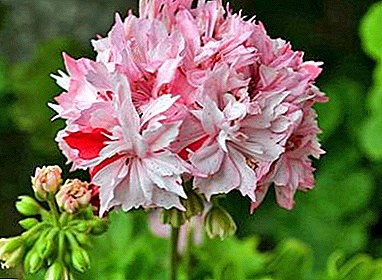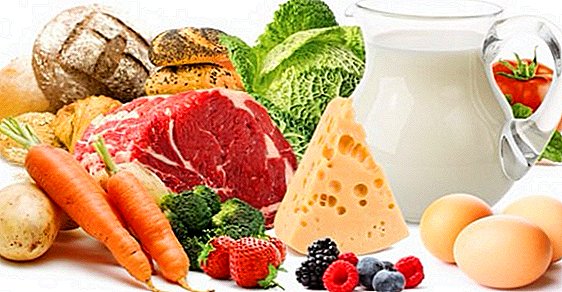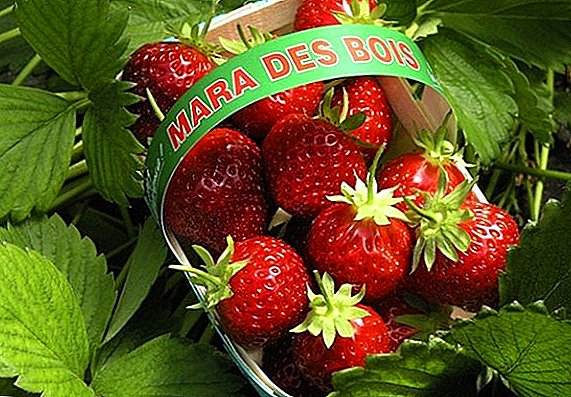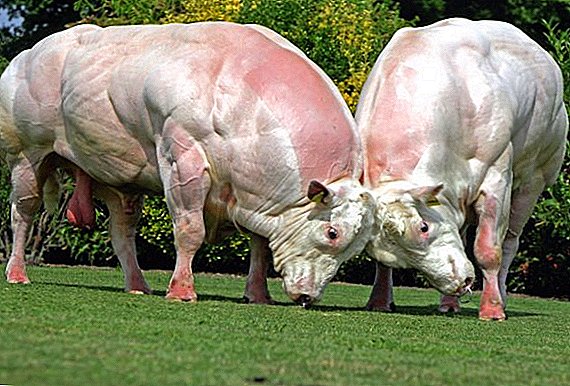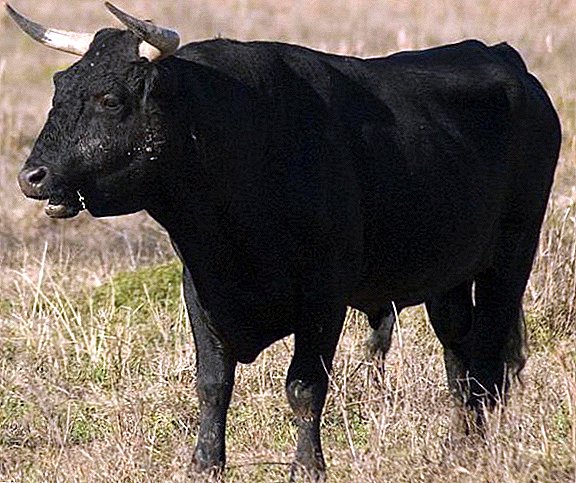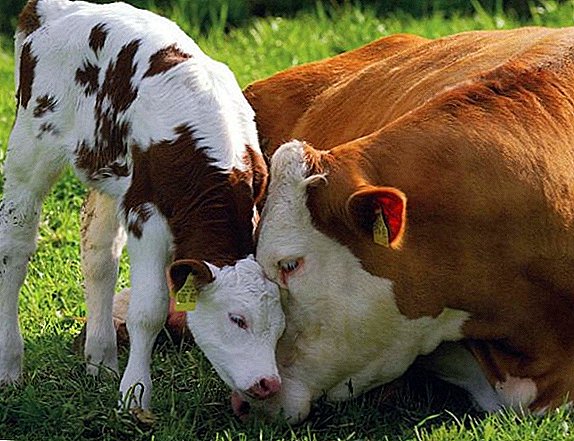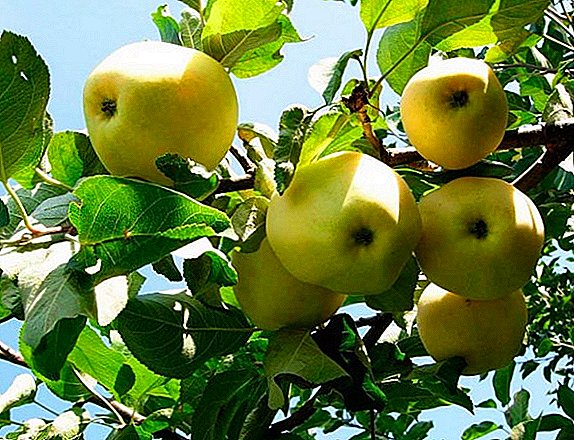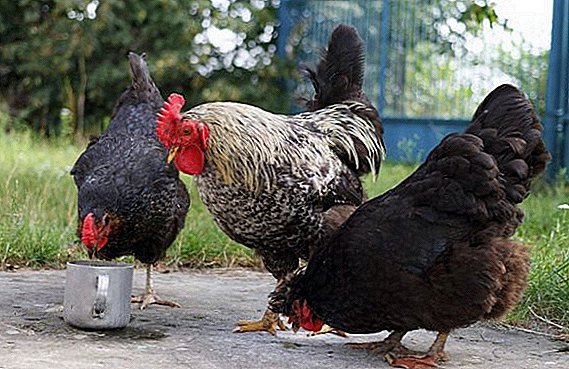 Beans, like some other legumes, are an excellent source of protein and essential amino acids for the body, which chickens need to replenish their stocks after laying.
Beans, like some other legumes, are an excellent source of protein and essential amino acids for the body, which chickens need to replenish their stocks after laying.
Given this fact, it is safe to say that this is a very valuable product in the diet of birds, and it is not only possible, but also necessary to give, but in what form it is better to do, read below.
Is it possible to give chickens
The benefits of beans for chickens are obvious, but not all birds know about it. It is likely that some of them will refuse such food, so it is worthwhile to determine in advance the most successful way of serving. Let's find out whether it can be poured into the feeders in a dry form or still better to boil for a start.
Raw beans
Raw beans rarely give the bird, but if you want to put it in the diet just like that, then you have to find a way to grind the product. First, with whole beans, chickens will simply choke, and, second, it will be easier to mix them with other feeds.  The benefits of the product are considerable:
The benefits of the product are considerable:
- the number of eggs produced increases;
- their quality increases;
- normal digestion and general well-being of birds;
- hunger quickly satisfied.
We advise you to find out whether it is possible to give chickens garlic, onions, sunflower seeds, beets, oats, and salt.
Boiled beans
The adherents of the “raw method” also have opponents among poultry farmers who advise boiling beans before handing them out to the bird. Having undergone heat treatment, it will not only be easier to digest, but also get rid of possible harmful microorganisms. To properly organize the preparation of the product, the beans are first soaked in water for 30-40 minutes, and then boiled for the same time.  The finished gruel can be fed to chickens as an independent dish, or you can add it to other types of food. The total amount of such an additive, as in the previous version, is calculated as ¼ of the total amount of food (or slightly more). As for its useful properties, they fully correspond to the above list, except that a small part of the useful substances is lost during the heat treatment, but this is insignificant. With the cooked product, the bird's stomach is much easier to handle.
The finished gruel can be fed to chickens as an independent dish, or you can add it to other types of food. The total amount of such an additive, as in the previous version, is calculated as ¼ of the total amount of food (or slightly more). As for its useful properties, they fully correspond to the above list, except that a small part of the useful substances is lost during the heat treatment, but this is insignificant. With the cooked product, the bird's stomach is much easier to handle.
Did you know? According to some historians, the beans served as an excellent bleach for the face during the reign of Cleopatra. The ruler applied a mixture of finely ground white beans and water to the skin, and then spread it in a thin layer to fill all the wrinkles. After several sessions, the skin on the face looked much younger and fresher.
Contraindications and harm
If you believe the experienced poultry farmers, then even after exceeding the specified dosage of beans, chickens will not suffer from this, but this does not mean that you need to uncontrolledly enter it into the diet. To diversify the menu of birds, it is enough to add the product 2-3 times a week, replacing the fourth part of the standard issued feed. Minimizing the possible risks will help soaking the beans, followed by boiling. So many of the toxins will pass from the beans into the water and will definitely not harm the body of the chickens. With raw beans is to be more careful than with boiled.
What else can feed chickens
Chickens are practically omnivores, so they eat almost all the leftovers from the human table well, but the poultry farmer will have to figure out the benefits of this or that product. Most often, feathery give the following food. 
Bread
Many poultry farmers really include this product in the chickens menu, but in fact it is not as harmless as it may seem. For example, a lot of salt and yeast are added to black bread, which can provoke fermentation in the bird's stomach, and a fresh product is not recommended at all to give, because when it absorbs moisture it quickly swells and forms a coma in the goiter. If the problem is not solved in time, the bird may die.
For a good chicken production, the correct diet plays a very important role. Find out what amount of feed you need to give a laying hen per day, which vitamins will help increase egg production, and whether it is possible to increase egg production in chickens in winter.
It turns out that the best option would be to introduce into the diet of "white" crackers, which, before being directly dispensed to the birds, are soaked in water. Dried bread is stored longer, and it is much easier for birds to gnaw crumbs.  As for the quantity, the white dried products should not take up more than 40% of the total amount of food in the feathered ration, and black bread can be given only once a week and in small quantities.
As for the quantity, the white dried products should not take up more than 40% of the total amount of food in the feathered ration, and black bread can be given only once a week and in small quantities.
Important! Whatever bread you use, there should be no mold on it, otherwise it will be impossible to guarantee a high egg production rate of chickens and their well-being.
A fish
The fish are very popular with most chickens, and they happily eat it in a ground form. This is a good source of calcium and phosphorus, which will be especially useful for young chickens in the period of strengthening the bones of the skeleton and laying hens that lose a lot of nutrients along with the demolished eggs. Giving fish can be no more than several times a week, and, of course, it should not be salted or smoked products.  To make it easier for the bird to cope with such food, it is recommended to boil it until the bones are completely softened, and then grind to a uniform state and mixed with the main feed. However, do not feed the birds too often with fish, it will be enough 1-2 times a week using 100-150 g of product mixed with the feed mixture.
To make it easier for the bird to cope with such food, it is recommended to boil it until the bones are completely softened, and then grind to a uniform state and mixed with the main feed. However, do not feed the birds too often with fish, it will be enough 1-2 times a week using 100-150 g of product mixed with the feed mixture.
Potatoes
Potatoes - one of the most common foods in the diet of poultry. It is perfectly combined with all kinds of food, quickly saturates the body of chickens and is always available for feeding. An excellent option would be to mix boiled potatoes with cereal mixtures, but it is undesirable to give raw vegetables to poultry in order to avoid possible poisoning by solanine. This substance is collected in large quantities in the skins of potatoes and can have a detrimental effect on the digestive system of the birds, if the potatoes did not undergo proper heat treatment before they were released.
Important! In no case should not give the feathery water remaining after boiling new potatoes, it is in it remains the most mentioned solanine.
Filling up chickens with potatoes can be started already from the third week of life, first introducing 100 g of product into their diet, and then bringing its share to 200-300 g in one go. 
Beans
In legumes (beans, beans, lentils) contains a lot of protein useful for chickens, as well as many important amino acids, which together led to the high nutritional value of such products. Beans are especially useful for meat-laying hens, as they contribute to a quick weight gain.
Do not feed chickens from bowls or from the ground. We recommend making poultry feeders for poultry: bunker, automatic or PVC pipe feeder.
For better digestion by the stomach of the bird, before issuing, all varieties must undergo heat treatment (they are cooked on the stove for 30-40 minutes), with pre-soaking. Starting from 4 weeks of age, the share of fodder beans in the diet of young stock can take no more than 5%, and with age this value increases to 8-17%, giving the beans no more than once a week.
Peas
Like other legumes, peas are an excellent source of protein and are well suited to somehow diversify the usual menu of chickens. As in other cases, it begins to enter into the diet in small portions and only in boiled form. With age, boiled food can gradually be replaced with dry, chopped peas, adding it to other feeds.  If you believe the reviews, the peas contribute to improved egg production. Average, it is enough to give it to a bird 1 time in 7 days in the amount of 200-300 g divided into several receptions.
If you believe the reviews, the peas contribute to improved egg production. Average, it is enough to give it to a bird 1 time in 7 days in the amount of 200-300 g divided into several receptions.
Did you know? Properly dried peas can be stored for 10-12 years without losing their nutritional properties.No matter what food you give to your birds, you should always follow the rules for feeding, because even the most useful product in excessive quantities can harm the body of the bird. This rule applies to the introduction of beans in the diet.
Reviews




